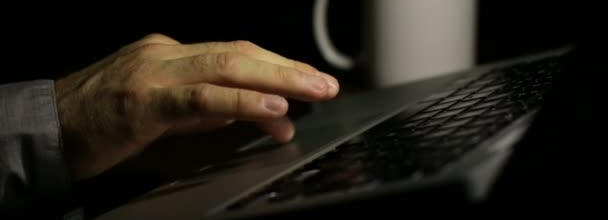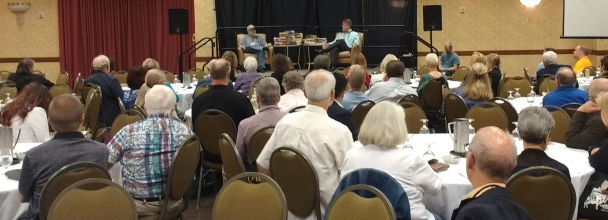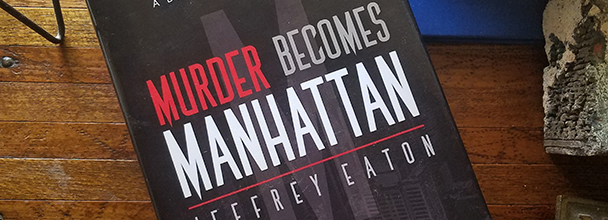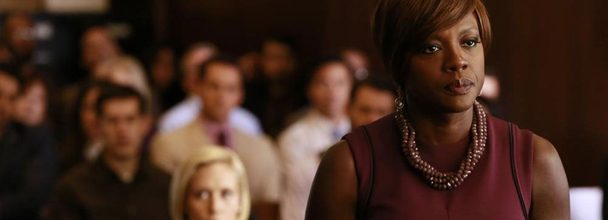
And . . . the first chapter of ‘Murder Becomes Macau’ is in the books (pun intended). murderbecomes.com
Let me put it this way: it’ll make you wary of any martini sent to you in a casino by someone you think you know, but don’t . . .

Author of the "Murder Becomes" mystery series
Posts about how I write and research my books.

And . . . the first chapter of ‘Murder Becomes Macau’ is in the books (pun intended). murderbecomes.com
Let me put it this way: it’ll make you wary of any martini sent to you in a casino by someone you think you know, but don’t . . .
 Magicians learned a long time ago that the best way to distract you from the legerdemain they are undertaking ‘over there,’ is to create some type of flourish, some sort of eye-catching extravaganza, ‘over here.’ Some claim today’s politicians now use this distraction technique more than magician’s do, making voters forget about some scandal ‘over here’ by focusing on some crisis or impending threat ‘over there.’
Magicians learned a long time ago that the best way to distract you from the legerdemain they are undertaking ‘over there,’ is to create some type of flourish, some sort of eye-catching extravaganza, ‘over here.’ Some claim today’s politicians now use this distraction technique more than magician’s do, making voters forget about some scandal ‘over here’ by focusing on some crisis or impending threat ‘over there.’
In “Murder Becomes Mayfair,” architect/detective Dalton Lee is told by his mysterious confidant that he should beware of distractions as he and his team try to deduce what terrorist plot The Organization has in store for London. And, try to understand why they felt the need to murder a seemingly humble tailor working on Savile Row.
But that mysterious confidant has also been distracted in a way that only becomes apparent near the end of the book. Seems nobody can trust anyone these days.
Fog. Electrical sprites. A haunted carnival ground. And seven identical suitcases showing up unannounced at Heathrow. These and many other mysterious elements will make “Murder Becomes Mayfair” the go-to thriller as we head into the holiday season.
Just don’t let anything distract you from purchasing this eerie mystery once September rolls around.
(Get the background about Dalton Lee and his team here)
 I am a big believer that those of you who read murder mysteries are more than a bit brighter than the average person. I respect that and, as a result, I use my journalistic training to research the names, locations, etc. in my books so they are as accurate, and authentic, as possible.
I am a big believer that those of you who read murder mysteries are more than a bit brighter than the average person. I respect that and, as a result, I use my journalistic training to research the names, locations, etc. in my books so they are as accurate, and authentic, as possible.
Not all authors make that effort.
In a podcast interview with up-and-coming thriller writer T. Blake Braddy, I discuss the new tools and approaches out there that help me and other authors nail down the details in our books so you aren’t rolling your eyes while you are reading them.
 It’s a question I’m often asked: when do you write/how do you find time to write?
It’s a question I’m often asked: when do you write/how do you find time to write?
Here is the answer: when I can. And I don’t beat myself up for not writing more, sooner.
As writers, we need to be kind to ourselves. In addition to creating a book, we also have to put gas in the car, compare nutritional statistics on different juice bottles, tend to a frustrated relative and/or take out the trash.
It can be overwhelming/frustrating. Especially when we have a vocation on top of our avocation.
So the trick for me is to set reasonable goals each week. I will write two chapters this week. I will also do 1 thing every other day on social media.
If I achieve all that, it’s been a stellar week. If not, I do not allow myself to get despondent. I just tweak next week’s schedule based on what else I have to do and keep putting one keystroke in front of the next.
Now and then. Here and there. One thing today, two things tomorrow. That’s the balance beam we persistent writers walk along, and don’t let anyone make deadlines or rushed expectations knock you off of it.
 Most writers go to conferences hoping to pique the interest of an agent or publisher.
Most writers go to conferences hoping to pique the interest of an agent or publisher.
But Day One of Killer Nashville proved to me that the true benefit of such conferences is interacting with, and learning from, other writers.
Inspiration comes in many forms. From William Kent Krueger, I learned that his idea of a series about murder mysteries occurring in grand resort hotels throughout North America is still waiting to be done. From Hartley Stevens, I learned that a creative book launch party can involve having the places that appear in your book actually come to life at the party. And from Cheryl Hollon, I learned that a good cozy mystery should always have a pun in the title and a dog (or knitting needles) on the cover.
Over the next three days, I look forward to learning so much more both about the process of writing and how to market murder mysteries — lessons I plan to incorporate in “Murder Becomes Mayfair,” coming to booksellers in May of 2017.
Oh, and I also learned that when the writers at a particular table talk all about themselves for 5 minutes and never ask you about you or your books, it is time to move on… 😉
 As I begin preliminary work this week on the third book in the “Murder Becomes” series, I am reminded of one of the biggest challenges I face – where in the book to introduce the murderer.
As I begin preliminary work this week on the third book in the “Murder Becomes” series, I am reminded of one of the biggest challenges I face – where in the book to introduce the murderer.
Should it be very near the beginning, when the reader least expects it and has lots of time throughout the book to forget them? Or should it be deeper within the book, right as the intrigue is kicking into high gear?
I also have to consider how central to the main story the murderer should be. If the murderer is always lurking along the perimeter of the tale but not too far out of sight, then the revelation of their identity can be a stunning surprise for the reader. But by planting that person as one of the central suspects, I can also give the reader the fun of playing detective along with Dalton Lee.
How do YOU like your murderer served up? On the side, as an unexpected garnish ? Or as one of several delicious morsels on the main dinner plate?
 This fall, I have at least three book clubs reading “Murder Becomes Manhattan.” When I appear at a book club, one question I am always asked is, “How do you go about writing one of your novels? Do you pretty much have the plot laid out when you start? Or do you change it along the way?”
This fall, I have at least three book clubs reading “Murder Becomes Manhattan.” When I appear at a book club, one question I am always asked is, “How do you go about writing one of your novels? Do you pretty much have the plot laid out when you start? Or do you change it along the way?”
The answer is ‘yes.’ And, ‘no.’
I am a linear thinker, so my tendency is to produce a book in a linear way. But it is almost impossible to write a good mystery thriller that way. That’s because you want the stray comment offered by someone in Chapter 17 to become the vital clue unearthed in Chapter 46. You want the subplot between two characters carefully developed in the first half of the book to take a sudden veer into unexpected territory in the second half.
But that requires some serious planning, some meaningful forethought, and sometimes what we in the industry call “backwriting”. I have backwritten a lot in “Murder Becomes Miami,” which comes out in November. That means I thought of a very cool way to shake things up late in the book, but for the shake-up to make sense, I had to go back and insert a few elements earlier in the book. The result I think is a book that’s more rich, I think, and something different to some degree from what I thought it would be when I launched into it.
That said, if I constantly stopped and shifted and backwrote, I might never finish a book. So here is what I do: I tend to charge forward with a general idea of the plot. I allow for the possibility of twists and turns I didn’t expect along the way but continue barreling forward with the goal of getting the entire story told.
THEN, I go back and refine, and shape, and sculpt, inserting some elements and discarding others, until the final story is ready for you to read.
How do you write? Similarly, or somehow different?
 Last night I sat down to a plate of calamari and a glass of pinot grigio at my favorite Italian restaurant to map out the plot to my next book, “Murder Becomes Miami.” Even though “Murder Becomes Manhattan” just landed a few weeks ago, I am itchin’ to carry on the tale of Dalton Lee and the architect/detectives who make up The Lee Group.
Last night I sat down to a plate of calamari and a glass of pinot grigio at my favorite Italian restaurant to map out the plot to my next book, “Murder Becomes Miami.” Even though “Murder Becomes Manhattan” just landed a few weeks ago, I am itchin’ to carry on the tale of Dalton Lee and the architect/detectives who make up The Lee Group.
Mapping out a plot is, I believe, one of the most exciting parts of crafting a book, for it by itself bathes me in a mood of mystery and intrigue well before I have written the first word.
Who will I select as the murderer and how will they be connected to this strange cult known as The Organization? What plot is The Organization hatching and how was the victim connected to it? How will I hide the murderer within the community of people you will meet? Who else will I put forward as possible suspects and how can I best make them suspect without making their innocence too obvious to you?
And most important, how can I push myself to ensure the reading experience I give you delivers twists and turns neither of us saw coming?
Whereas the architecture of the skyscrapers in Manhattan took center stage in the first book, in this next book it will be the Art Deco motifs found in Miami. But an architectural detail will once again play a key role in the solving of the murder.
I look forward to the tale unfolding and to your feedback as to how I can improve on the debut effort found in “Murder Becomes Manhattan.”
 As Murder Becomes Manhattan nears its debut (less than 24 hours!), I wonder who within the book readers will most connect with.
As Murder Becomes Manhattan nears its debut (less than 24 hours!), I wonder who within the book readers will most connect with.
Will it be Dalton Lee, the dashing but quirky lead detective whose genius is unquestioned but whose personal life is a wreck? Or will it be Bree, who has a nervous breakdown triggered by a street performer?
Perhaps it will be Roberto, whose devotion to his little sister drives him to desperate measures that threatens the security of all of his colleagues.
But then it might be one of the suspects, like the flamboyant and shrill Carolina Campobello or the totally transparent wannabe, Toni Spencer.
Only time will tell. And I am sure the result will be very different from what I might have imagined. You can pre-order Murder Becomes Manhattan now at Amazon.com, Nook.com, Kobo.com and through iTunes.
 Murder Becomes Manhattan has essential clues to the killer’s identity, and the victim’s connection to The Organization, scattered throughout it. But they are subtly woven in, delivered in passing. At least, I hope they are. 😉
Murder Becomes Manhattan has essential clues to the killer’s identity, and the victim’s connection to The Organization, scattered throughout it. But they are subtly woven in, delivered in passing. At least, I hope they are. 😉
The importance of subtlety in delivering clues has become more apparent to me as I watch such television series as “Scandal” and “Castle” and “How to Get Away With Murder”.
On the latter show, it was a small detail of background wallpaper in an incriminating photograph that revealed the racy photo was actually taken in the home of the character played by Viola Davis. In another episode, house numbers briefly seen in a video turned out to be integral to identifying someone being somewhere they should not have been.
Last night’s episode showed a newscast with a reporter delivering damning information and in the middle of the report, someone runs past the camera behind the reporter and mugs it. I have no doubt that small detail will loom large later in the show.
With mystery readers becoming more and more savvy, I believe it is becoming more and more difficult to embed clues the reader will not recognize as having importance. What deftly hidden clues have you found well executed in the mystery writing you have encountered?